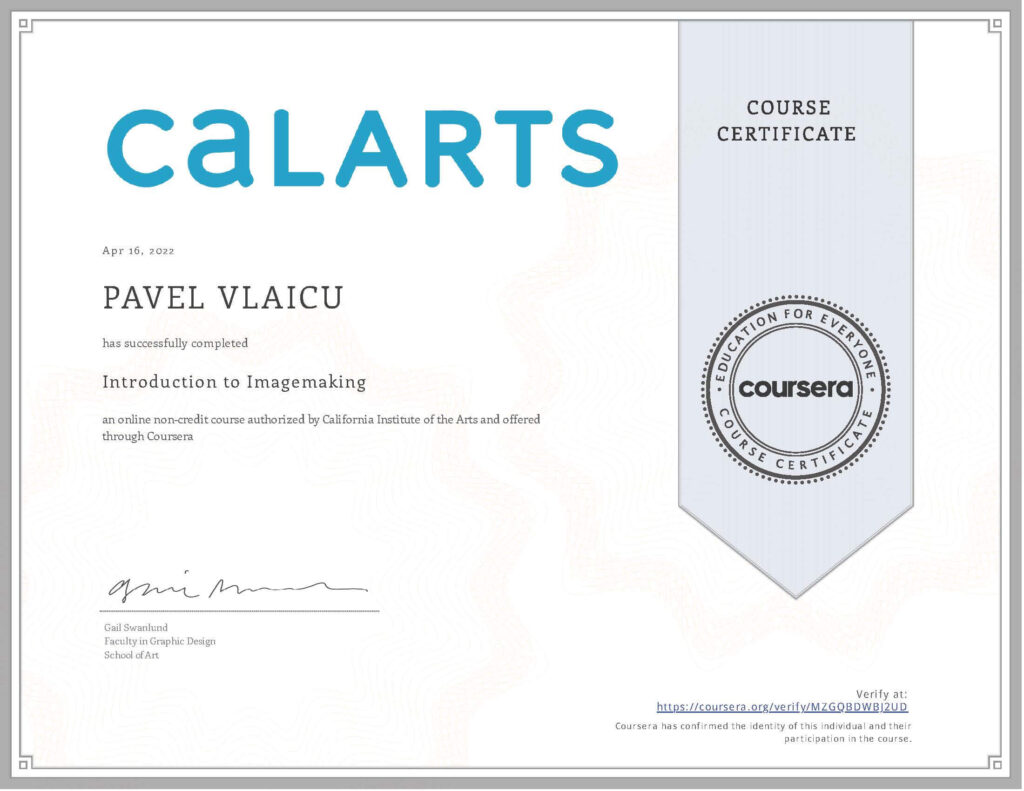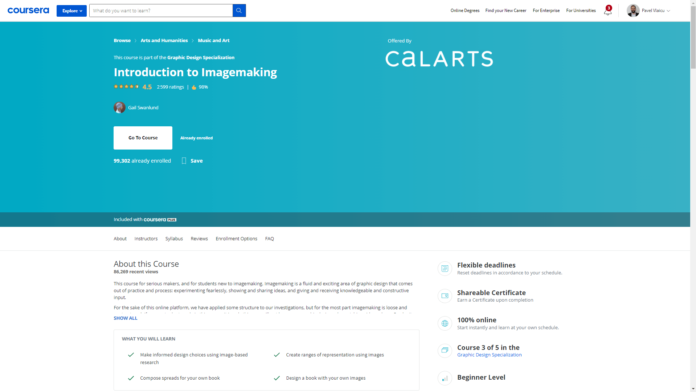About this Course
This course for serious makers, and for students new to imagemaking. Imagemaking is a fluid and exciting area of graphic design that comes out of practice and process: experimenting fearlessly, showing and sharing ideas, and giving and receiving knowledgeable and constructive input.
For the sake of this online platform, we have applied some structure to our investigations, but for the most part imagemaking is loose and unstructured. If we must adopt a rule in this course it is only this: you will not become a graphic designer by watching videos alone. Or, don’t just make stuff just in your head. So here, the focus here is on making, and you are expected to devote serious time and intellectual energy to that activity in this course. Specifically, you will:
– experiment with a range of materials and techniques to make images for graphic design
– expand your visual vocabulary both in terms of making and talking about work, in order to discuss your work and work of others
– learn how to make, manipulate and arrange images to create compositions, eventually culminating in the design and production of an-image-based book.
The first half of the course is an opportunity to experiment and explore imagemaking in order to expand your visual vocabulary. You will create pieces that are expressive, meditative, or ‘design-y’ to instigate, evoke, experiment, record, explain, or try out a media.
In the second two weeks, we’ll invite the images to deliberately and intentionally carry meaning and communication through relational moves like juxtaposition, composition, and context. We’ll look at developing and expanding the range of approaches for putting things together by composing page spreads with your images. Since nothing exists without context, we look at how to intentionally drive the image’s connotations, meanings, and associations generated through elements of composition and “visual contrasts.” Ultimately, we will take the images that you create and make a book from them.
The results of your assignments (and experiments) may generate something completely unknowable now or in the future—and that’s the goal.
What you will learn
Make informed design choices using image-based research
Create ranges of representation using images
Compose spreads for your own book
Design a book with your own images
Skills you will gain
Adobe Indesign
Art
Creativity
Graphics
Instructor
Gail Swanlund
Faculty in Graphic Design
School of Art
Offered by
California Institute of the Arts
CalArts has earned an international reputation as the leading college of the visual and performing arts in the United States. Offering rigorous undergraduate and graduate degree programs through six schools—Art, Critical Studies, Dance, Film/Video, Music, and Theater—CalArts has championed creative excellence, critical reflection, and the development of new forms and expressions.
Syllabus – What you will learn from this course
Week 1
Week 1: Image-based Research
Welcome! This week we will introduce image-based research and investigate these images in a design context using a range of techniques. You will then choose a subject of your own to research that will become the basis for your experiments and designs in the coming weeks.
Week 2
Week 2: Making Images
This week is a making session! You will take the subject you selected last week and think about it in different ways. From simple to complex, hand to digital, realistic to abstract and everything in between, we’ll explore and experiment freely. We’ll also consider different modes of representation, and try a hand at creating our own ranges of representation with images.
Week 3
Week 3: Composition is Relational
In this third week, we will define and investigate core principles of composition, and begin to compose simple spreads for your book.
Week 4
Week 4: Designing a Book with Your Images
In this final week, we will pull together your work from the previous weeks to make spreads using 10-20 of your favorite images from your assignments and compile them into a 8-page book. I am also sharing with you a few image-based books to give you some ideas on how to structure your book. Note that for the final assignment I am asking you to submit a digital book through Issuu (instructions are included in the assignment). If you choose to create your images by hand, you will still need a computer loaded with InDesign or a similar program to clean up the images and prepare the files for upload to the Coursera platform.

